Abstract
Because of the many heterogeneous systems which are of interest to the chemist and biochemist, the problems of distortions in circular dichroism patterns have been investigated. Specifically in this communication it is shown with a relatively well-characterized particular system (a suspension of α-helical poly-L-glutamic acid) that there is a measurable differential scatter of left and right circularly polarized light by suspensions of the optically active particles. This is a specific example of Perrin's assertion in 1942 (Perrin, F., J. Chem. Phys., 10, 415 (1942)) that the polarization characteristics of scattered light would differ depending on whether or not the scattering particle was optically active.
Differential scatter is included with the concentration obscuring effects to demonstrate that distorted circular dichroism spectra on poly-L-glutamic acid suspension can be calculated with satisfying accuracy. The approach should be applicable to correcting the circular dichroism spectra for the many particles of biological interest, e.g., membranes, viruses, mitochondria, and insoluble proteins and polypeptides, and for small crystals in an effort to answer the crystal solution problem.
Full text
PDF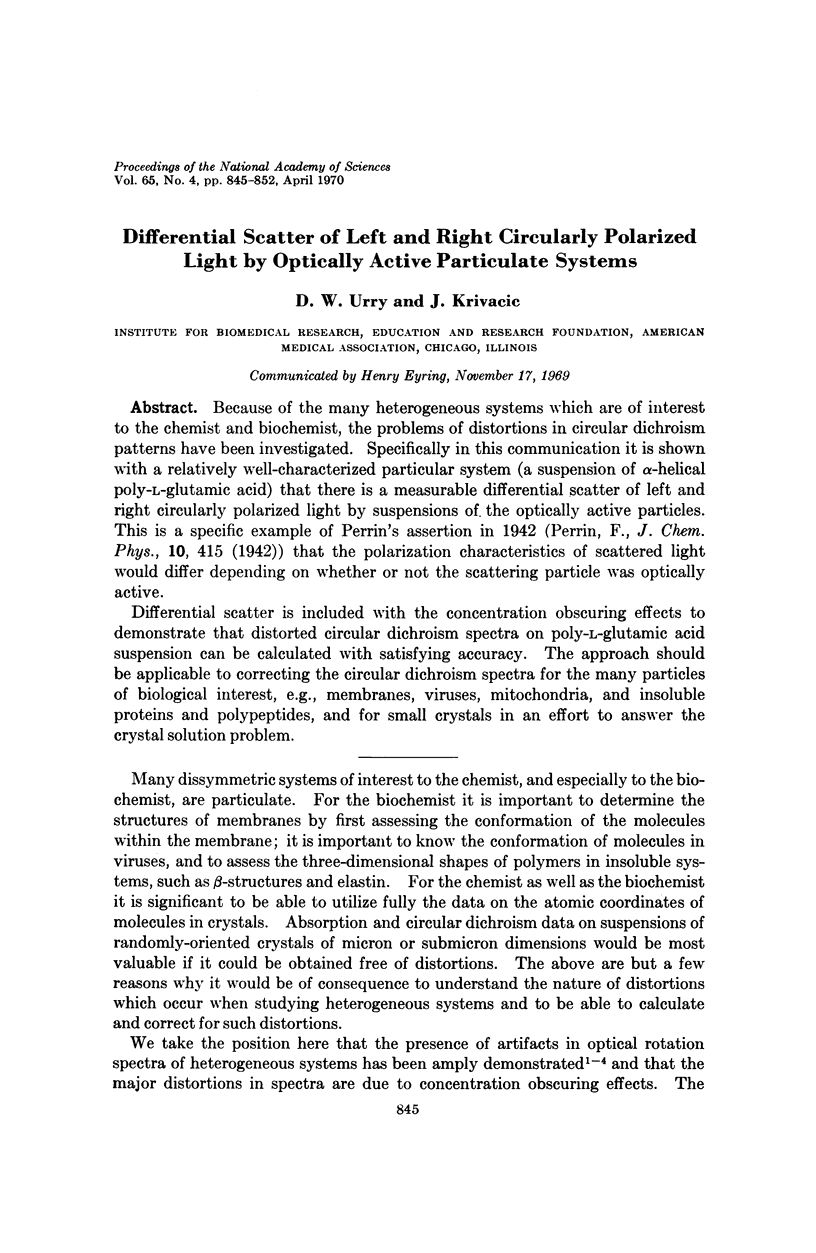
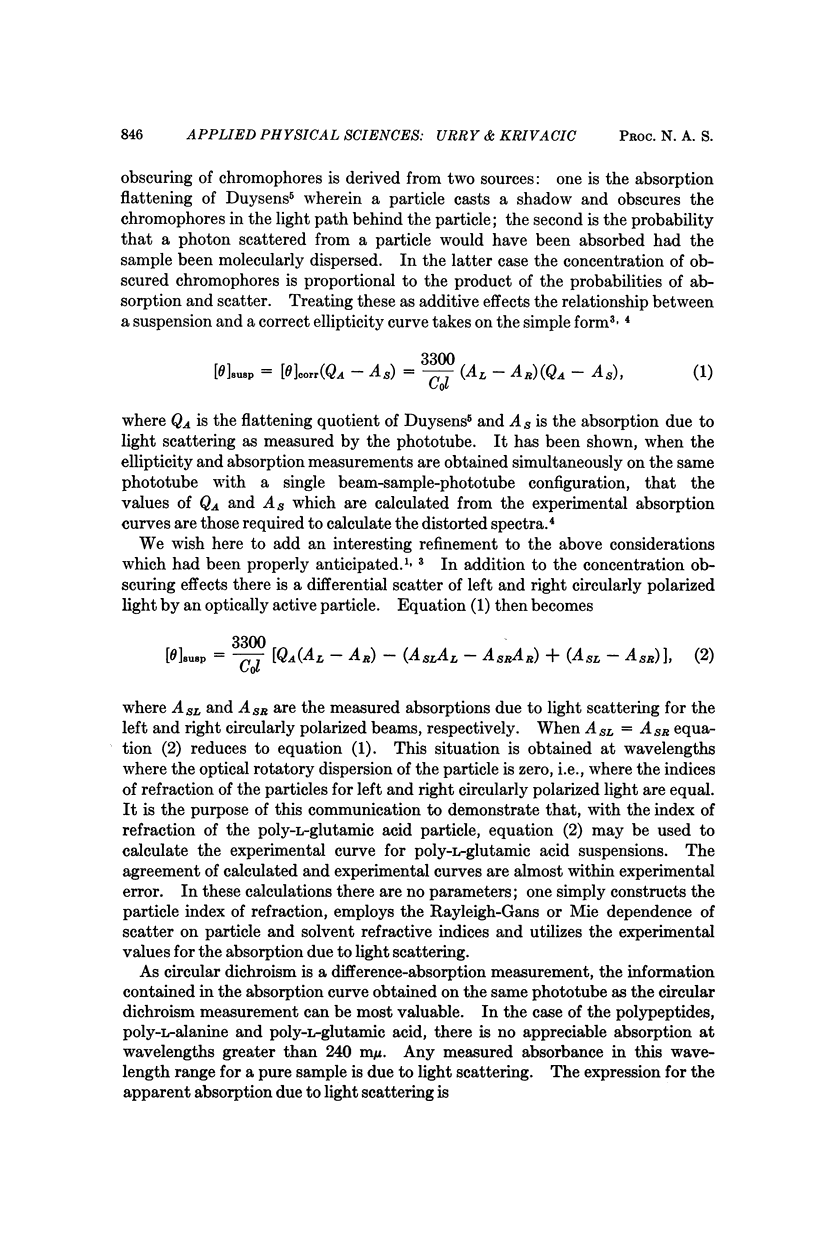
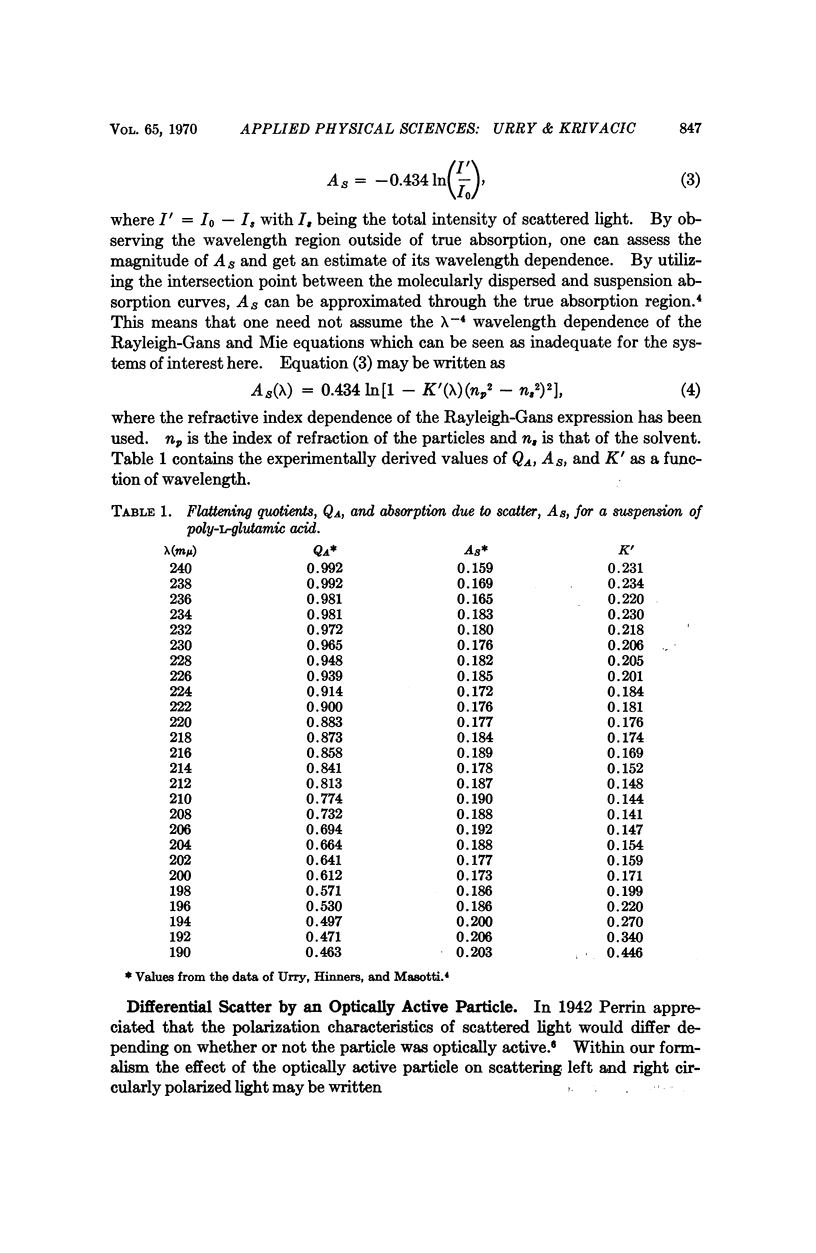
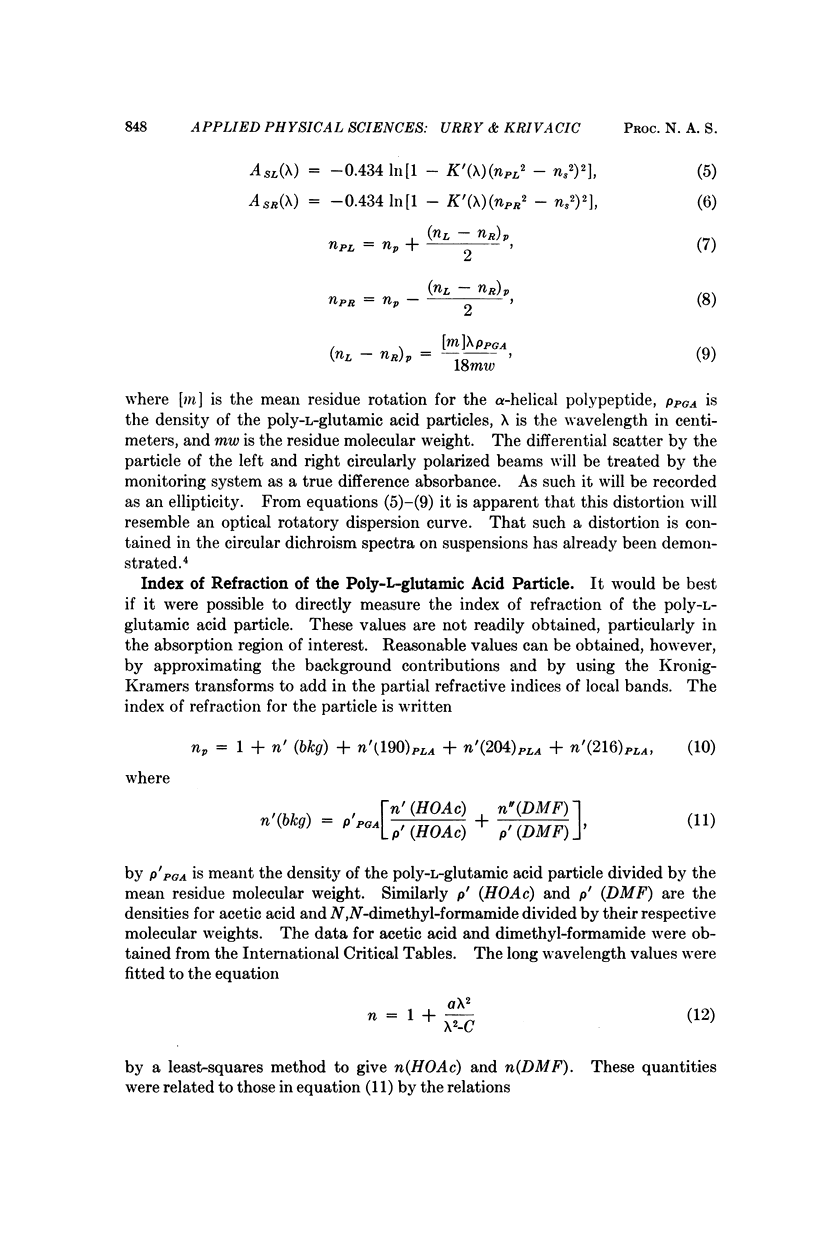
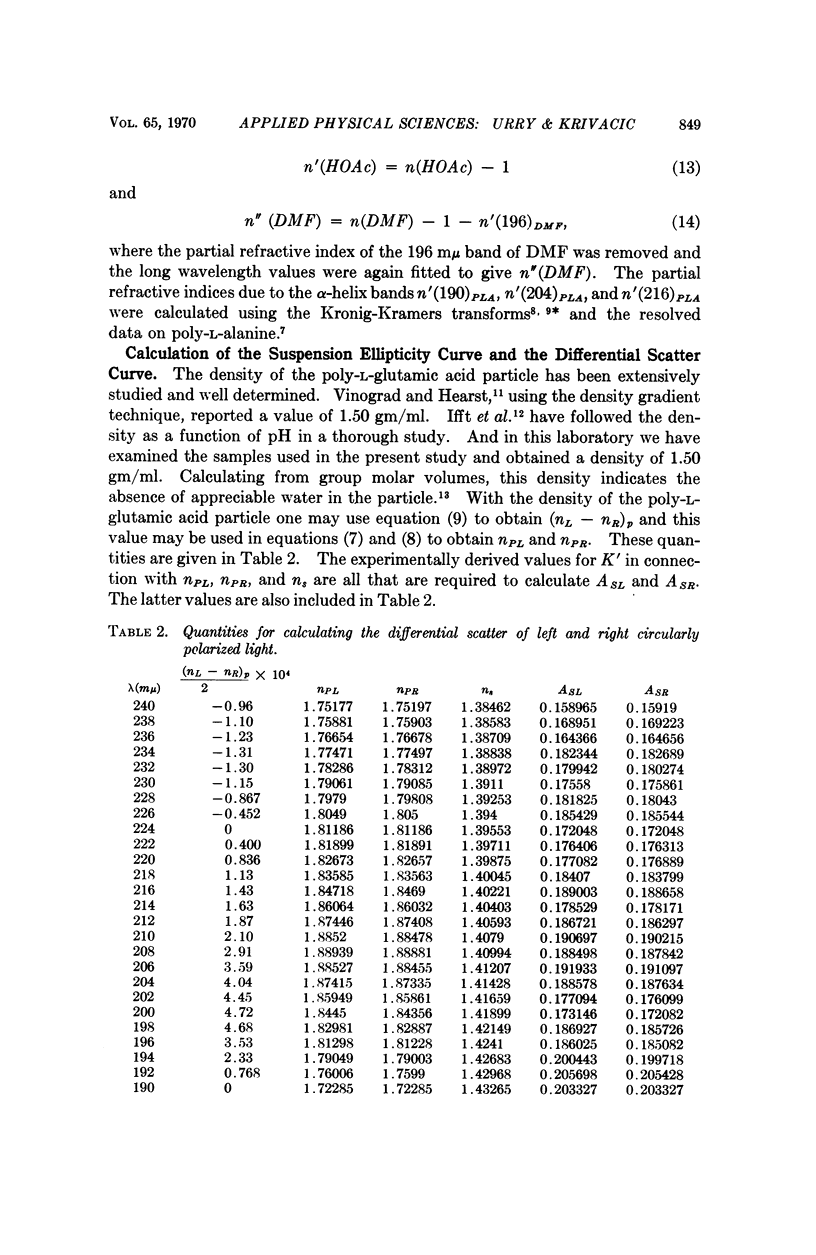
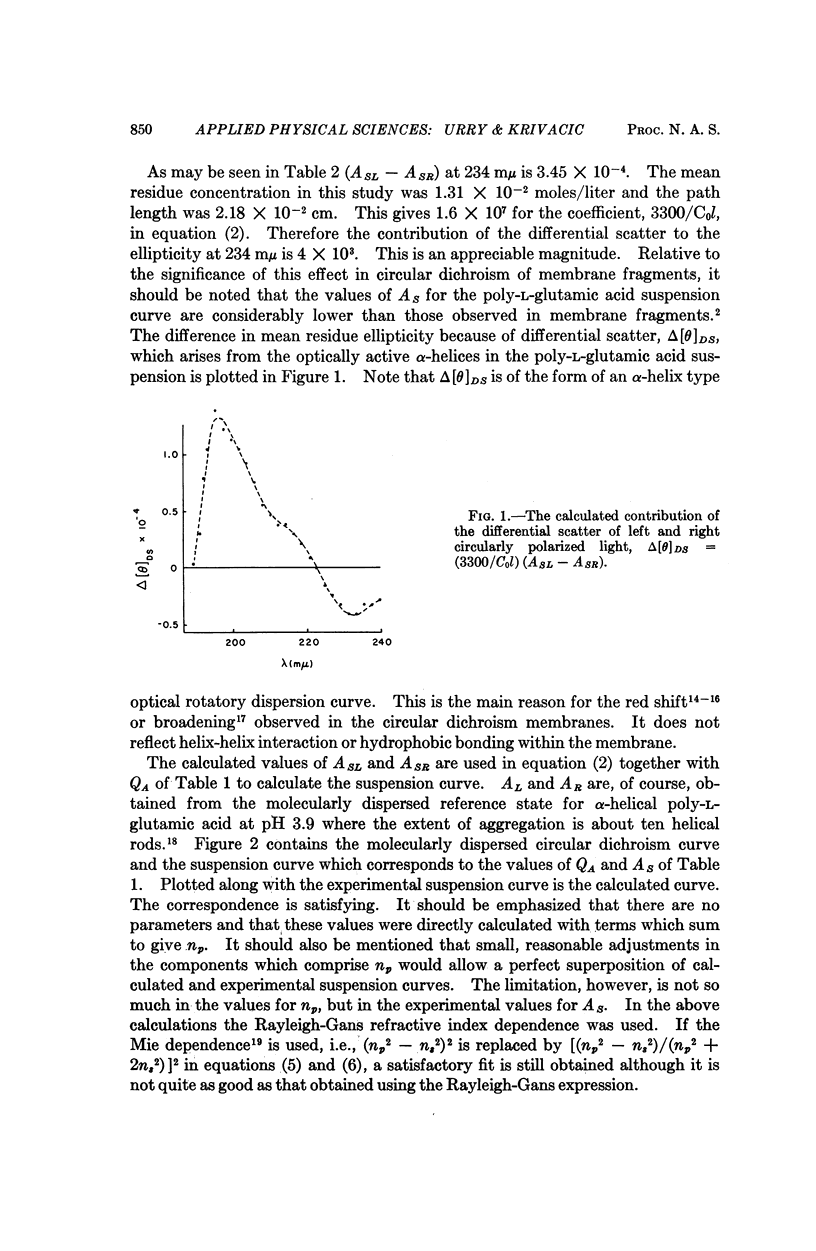
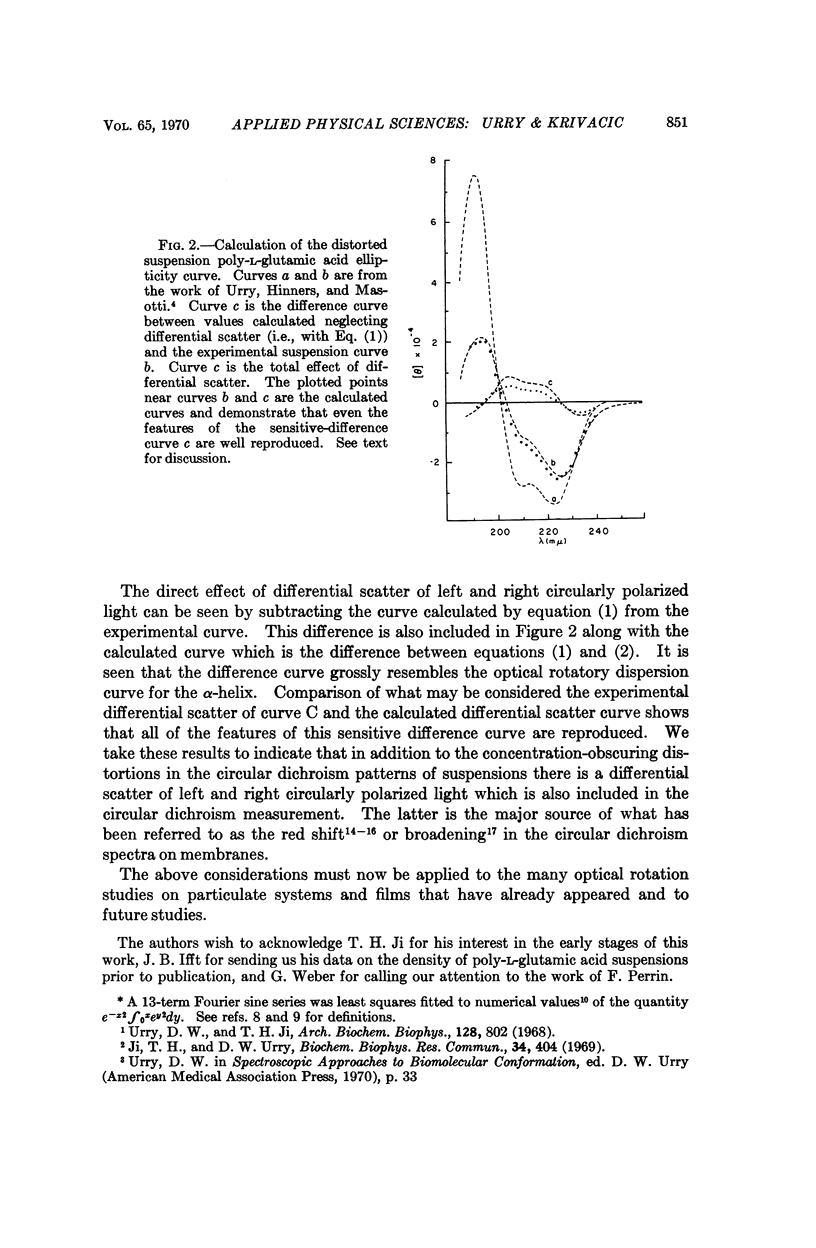
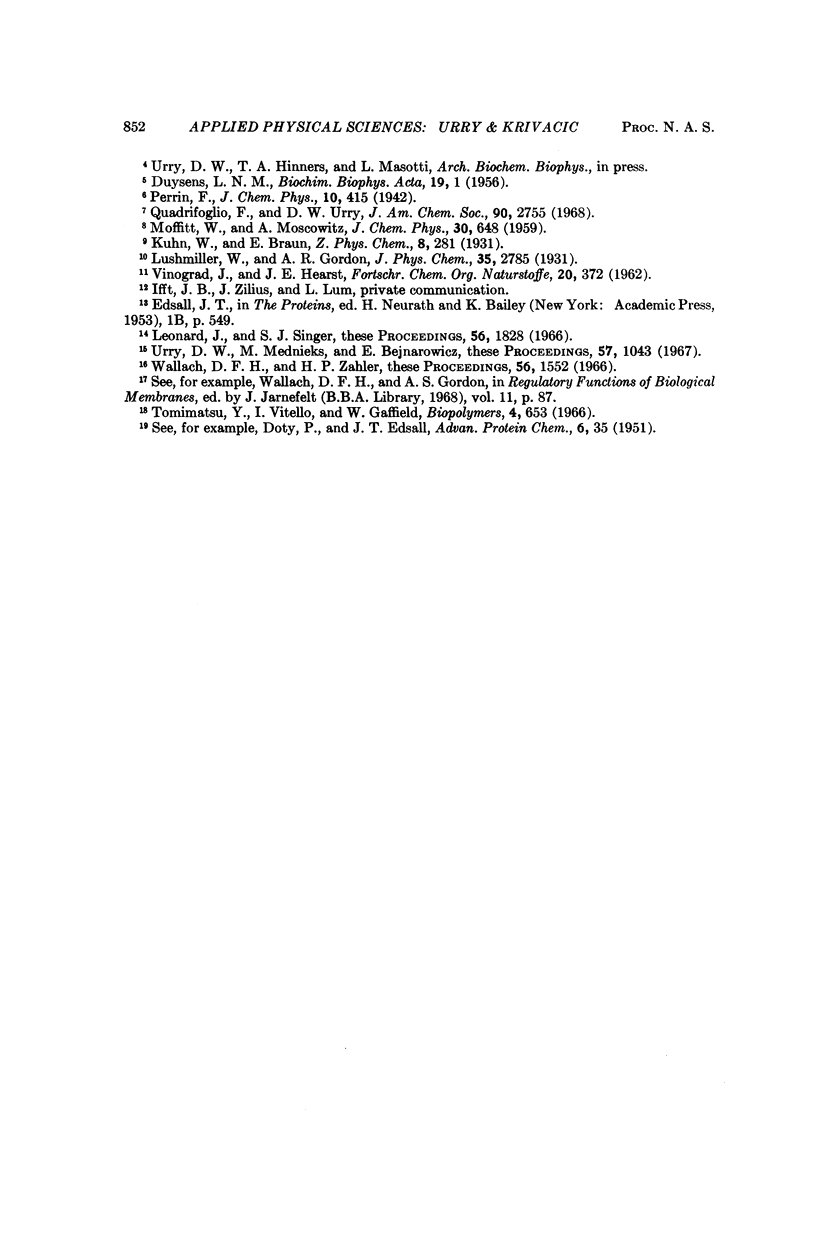
Selected References
These references are in PubMed. This may not be the complete list of references from this article.
- DUYSENS L. N. The flattening of the absorption spectrum of suspensions, as compared to that of solutions. Biochim Biophys Acta. 1956 Jan;19(1):1–12. doi: 10.1016/0006-3002(56)90380-8. [DOI] [PubMed] [Google Scholar]
- Ji T. H., Urry D. W. Correlation of light scattering and absorption flattening effects with distortions in the circular dichroism patterns of mitochondrial membrane fragments. Biochem Biophys Res Commun. 1969 Feb 21;34(4):404–411. doi: 10.1016/0006-291x(69)90396-9. [DOI] [PubMed] [Google Scholar]
- Lenard J., Singer S. J. Protein conformation in cell membrane preparations as studied by optical rotatory dispersion and circular dichroism. Proc Natl Acad Sci U S A. 1966 Dec;56(6):1828–1835. doi: 10.1073/pnas.56.6.1828. [DOI] [PMC free article] [PubMed] [Google Scholar]
- Quadrifoglio F., Urry D. W. Ultraviolet rotatory properties of polypeptides in solution. I. Helical poly-L-alanine. J Am Chem Soc. 1968 May 22;90(11):2755–2760. doi: 10.1021/ja01013a004. [DOI] [PubMed] [Google Scholar]
- Urry D. W., Ji T. H. Distortions in circular dichroism patterns of particulate (or membranous) systems. Arch Biochem Biophys. 1968 Dec;128(3):802–807. doi: 10.1016/0003-9861(68)90088-x. [DOI] [PubMed] [Google Scholar]
- Urry D. W., Mednieks M., Bejnarowicz E. Optical rotation of mitochondrial membranes. Proc Natl Acad Sci U S A. 1967 Apr;57(4):1043–1049. doi: 10.1073/pnas.57.4.1043. [DOI] [PMC free article] [PubMed] [Google Scholar]
- Wallach D. F., Zahler P. H. Protein conformations in cellular membranes. Proc Natl Acad Sci U S A. 1966 Nov;56(5):1552–1559. doi: 10.1073/pnas.56.5.1552. [DOI] [PMC free article] [PubMed] [Google Scholar]


